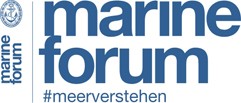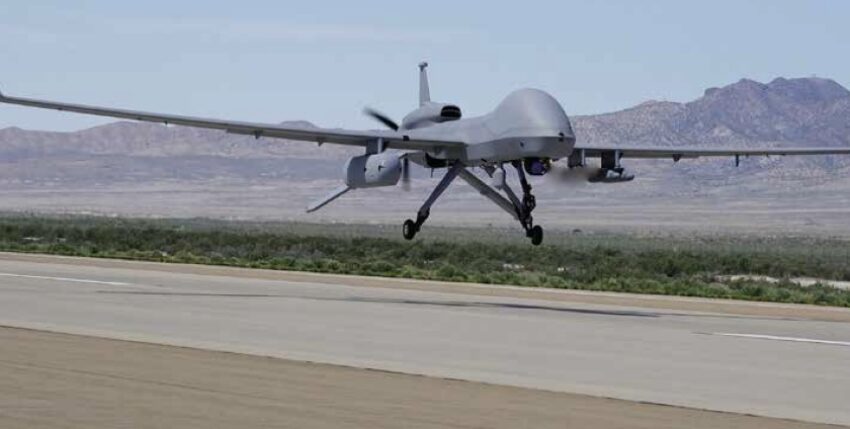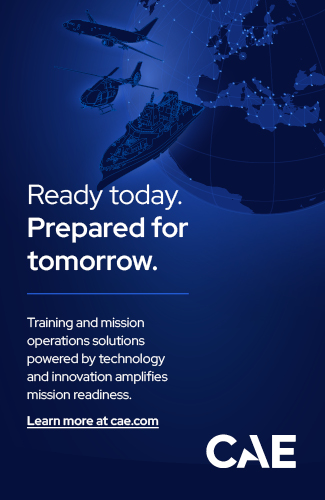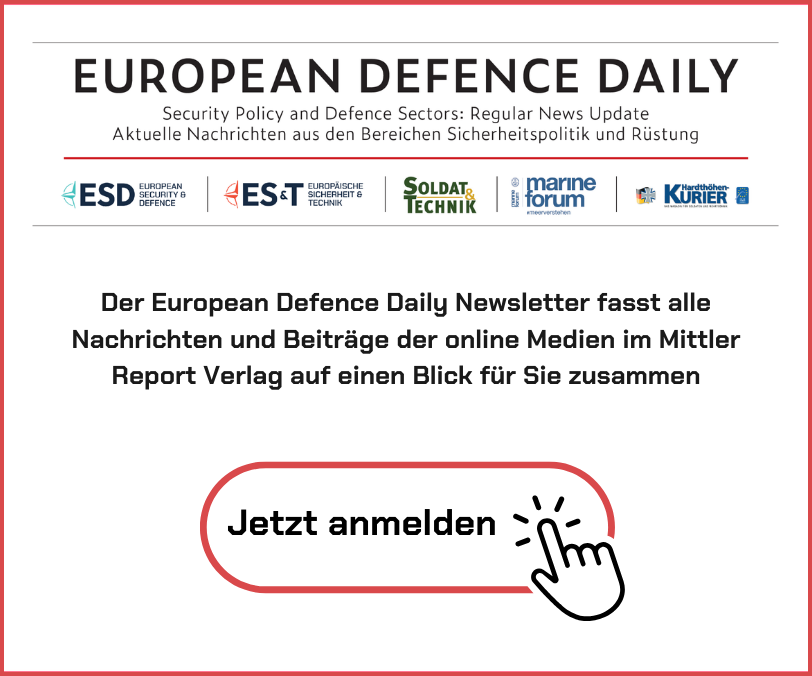At its core, modern warfare results in an increasingly complex interplay of domains. With its Cross-Domain Command Concept, NATO is pioneering this development.
When the Third Reich on 11 December 1941four days after the Japanese navy's attack on the American naval base at Pearl Harbor, declared war on the USA, this came as no surprise to the US armed forces. More than half a year earlier, leading officers in the US Navy had already realised that war with the Third Reich was imminent. The question was not whether, but rather when. This is evidenced by extensive correspondence between high-ranking American admirals as well as the Plan Dog memorandum written in 1940 by the then Chief of Naval Operations.
At this time, Great Britain was already engaged in an existential battle for survival with Hitler's Germany, whose U-boats threatened to cut off the kingdom's supplies. By this time, the Royal Navy had built up an outstanding and complex system to combat the German submarines. The kill chain did not only include modern tactics and technologies for the time, such as radar and sonar. Rather, the secret of the Royal Navy's success was the orchestration and synchronisation of the entire value chain between science, cryptology, reconnaissance and tactics in the form of actionable intelligence. This was subsequently available to the submarine hunters in the Atlantic in a targeted manner and unusually quickly by the standards of the time. By the end of 1941, the Royal Navy was the undisputed global gold standard in the field of submarine hunting.
By this time, an extensive transfer of technology and doctrine between the Royal Navy and the US Navy had already begun. Numerous American officers travelled as observers on British ships, visited British facilities and were sometimes integrated into British staffs, where they gained deep insights into key technologies and tried and tested tactics such as the convoy system.
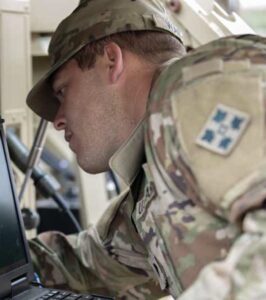
Despite this knowledge of proven tactics and technologies and their operational application, as well as the knowledge of an impending war with the Third Reich, the German declaration of war and the immediately following Operation Paukenschlag caught the US Navy completely unprepared. It took over six months for the American forces on the East Coast to establish a structure and a command and control organisation and to apply procedures that had been known to them for over a year. The inability to learn quickly and in time is a well-known example in the literature of the inertia of large organisations to adapt and prepare in time for known challenges. In the case of the US Navy, the Allies paid with thousands of gross registered tonnes sunk and hundreds of lives lost - with blood and treasure - as they say in the USA.
We are at a similar point in history today. Our intelligence services are warning of a Russia that is arming itself to a suspicious degree, preparing itself socially for a long-lasting and intense conflict and is already testing and challenging us in many areas. The Supreme Commander of the Allied Forces in Europe no longer rules out a major military conflict on the continent in the next seven to ten years - as does the German Inspector General Carsten Breuer.
NATO is responding to the changed threat situation by adapting its planning objectives, which entails a massive armament of the individual member states in terms of material and personnel. At the same time, it is responding by further developing its strategy in order to compensate for lower casualty acceptance and temporary numerical inferiority on the battlefield with a technological advantage. The technological equalisation is intended to credibly relativise A2/AD challenges and sufficiently deter potential opponents.
At the operational level, this means the introduction of Multi Domain Operations (MDO), also known by some as "joint warfare on steroids" is called. But MDO means much more than an extension of the operational level of the combined arms battle (joint warfare). With cyber and space, MDO not only actively integrates two additional domains into combat operations for the first time, but also aims to achieve effects through the targeted activation and integration of non-military actors. In addition - and this should not be underestimated - MDO aims to significantly increase the operational tempo by utilising the ability to evaluate and analyse mass data and develop options for action with the aid of artificial intelligence. The opponent is overwhelmed and overpowered early on in a conflict by a rapid sequence of overlapping effects. Wear and tear, material reserves and society's capacity for suffering do not even come into play.
The centrepiece of MDO is its command and control architecture, the so-called Cross Domain Command. NATO will shortly adopt the Cross-Domain Command Concept (CDCC) as the basis for further implementation. In its structure, the CDCC describes the increasing complexity of the interplay between the domains and the various actors in the context of the military leader's area of action (commander's influence space). This is associated with the necessary change, the evolution of Command and control to command intent and mindsetto which the CDCC provides answers with principles and imperatives for a CDC framework to be created. The desired result is an agile and unified leadership for informed, faster and better decisions that achieves the desired effects based on data and supported by technology.
In this new CDC world, commanders in the field are equipped with far-reaching powers and have access to near real-time situational awareness, analysis and decision-making processes. These are largely based on artificial intelligence and data analytics. At the same time, subordination relationships in the sense of a supporting and supported commanders significantly more dynamic. They change fluidly across all domains. For certain operations and periods of time, military leaders are given access to capabilities that in some cases lie outside their own domain. This represents an enormous mental challenge for commanders who have previously been socialised and trained in a highly hierarchical C2 world. If we have so far assumed that the desired kill chain When we spoke of the future, we always thought of a hierarchical and successive chain of authorities and powers. The future, however, will be a kill web which can adapt flexibly and constantly anew to existing threats or courses of action spins.
This has decisive consequences for our armed forces and therefore also for our navy. We will have our future way of war not only in the procurement of our platforms, but also in our personnel selection and training. How do we recruit our personnel and how do we train them? How do we promote our personnel and how do we select commanders to be promoted in the first place? From the CDCC's perspective, competences in the area of data literacycritical thinking, technical interest and technical aptitude play a key role. The same applies to the question of how we think, plan and train tactical and operational warfare - including in the domains.
Key concepts such as data sharing, data exchange, data appreciation and data exploitation are suitable for serving as points of reference for our leadership in the necessary adoption of new structures and establishment of new procedures. At the same time, they emphasise the inevitability of an urgently needed fusion of the basic command areas of intelligence and operations. Overall, we have to ask ourselves whether the classic M structure with its division of command and control areas is still the right answer to the war of tomorrow. This will certainly be challenging and difficult to accept for many on both sides.
However, if we do not succeed in developing a navy along these lines, then we will not be on the battlefield and, like the US Navy over 80 years ago, we will learn our lessons with blood and treasurepay. Consequently, the inspector of the navy demands in this year's Commander's Intentto pick up on these trends and to think and live the adaptability and innovation of the navy in a centralised way.
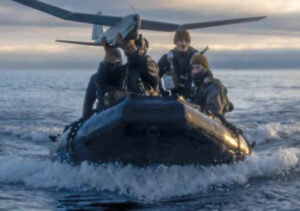
Incidentally, it is interesting to note that the authors of the CDCC are convinced that we need to roll out and introduce Cross-Domain Command as part of a gradual experimentation process. They consider it fatal to develop the concept while acquiring all the necessary technical skills in advance. This also means that we do not necessarily need to know now what our future command structure will look like. We need to test it experimentally in exercises and operations and develop it step by step. The coming enhancing and vigilance activity Baltic Sentry offers a favourable opportunity for our navy not only to test equipment and procedures, but also to review its command structures.
That gives us hope. Because if we allow ourselves to try things out and experiment with new approaches, then we will be more successful in motivating, activating and involving people as part of change management. At the same time, we will also achieve more and faster than we would on our well-trodden paths.
Our navy has already proven that it can do this. In 2020 and 2021, it conducted one of the largest cross-force reconnaissance operations with air power and cyber involving new key technologies and command and control assets not intended for this purpose - with unexpected and groundbreaking results. At that time, like the Royal Navy over 80 years ago, it generated intelligence through a targeted networking of science, technology, cryptology and the orchestration of various situation pictures operational intelligenceThe results achieved in the process far overshadowed the objectives of years of conceptual procurement in sub-hunting. The results achieved far overshadowed the goals of years of conceptual procurement in submarine hunting.
People are crucial for an organisation: they make the difference. However, we overlook the fact that people have to act within the structures given to them. With our management and decision-making structures, our culture of simply trying out something new, we set the framework for the actions of our men and women. It is the organisation and its structure that determine its own effectiveness and the lethality decide and thus a kill web that makes the difference on the battlefield. Failure to enable this in the organisation prevents effective deterrence and success in combat. The US Navy adapted after the harsh setbacks over 80 years ago and then found the right answers to the threats. But the initial inconsistency in action came at a high price: dead, wounded, loss of combat power and cascading effects that jeopardised the existence of its most important ally in Europe.
Frigate Captain Frédéric Strauch is a policy advisor on the staff of the German Military Representative to the NATO and EU Military Committee.
Frédéric Strauch
